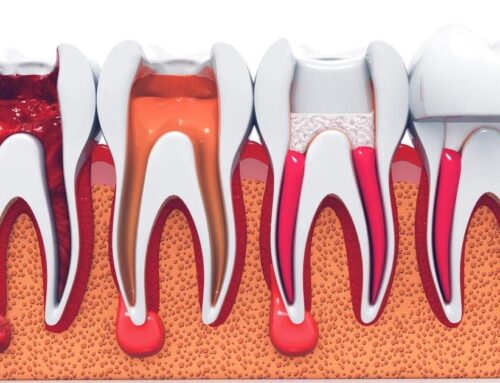 This question comes up often and we’re glad people are doing their homework. X-Rays are a necessary procedure to evaluate everyone’s teeth, jaw and bones. Dental X-Rays are not like Medical X-Rays in that Medical X-Rays are ordered when there may be a problem. Dental X-Rays, when done properly and at the proper intervals, can help provide a diagnosis and good clinical information so that a person can make treatment decisions based on their current status. In short, a Dentist can often times see many things before they actually happen for most people. “I’ll wait ‘til it hurts” is not advisable or necessary today as many diseases occur without any symptoms yet are very easily detectable on proper X-Ray examination. A dentist with a full head and neck clinical examination and a current full set of dental X-Rays can show you what’s happening, what is likely to happen, and what may happen down the road. The dentist can show you what’s going well along with early warning signs, small problems that, if left untreated, will develop into much bigger and more costly problems later. Benjamin Franklin said, “an ounce of prevention is worth a pound of cure” and in today’s terms he might have said “a few dollars spent today on prevention, will save me hundreds of dollars later”.
This question comes up often and we’re glad people are doing their homework. X-Rays are a necessary procedure to evaluate everyone’s teeth, jaw and bones. Dental X-Rays are not like Medical X-Rays in that Medical X-Rays are ordered when there may be a problem. Dental X-Rays, when done properly and at the proper intervals, can help provide a diagnosis and good clinical information so that a person can make treatment decisions based on their current status. In short, a Dentist can often times see many things before they actually happen for most people. “I’ll wait ‘til it hurts” is not advisable or necessary today as many diseases occur without any symptoms yet are very easily detectable on proper X-Ray examination. A dentist with a full head and neck clinical examination and a current full set of dental X-Rays can show you what’s happening, what is likely to happen, and what may happen down the road. The dentist can show you what’s going well along with early warning signs, small problems that, if left untreated, will develop into much bigger and more costly problems later. Benjamin Franklin said, “an ounce of prevention is worth a pound of cure” and in today’s terms he might have said “a few dollars spent today on prevention, will save me hundreds of dollars later”.
According to the American Dental Association, a full set of dental X-Rays, for most people, is needed every 5-7 years. There are many factors that determine this timetable:
- Do you have gum disease?
- Have you had many dental restorations placed? If so, what type?
- Have you been seen regularly for cleanings and examinations?
- What’s your DMF number? (Decayed Missing or Filled)
- Do you brush and floss regularly?
- What’s your family history?
Bottom line? See your dentist regularly and talk to him/her about your own personal history, wants and needs. Then develop a plan moving forward to achieve the level of oral health that you are looking for






